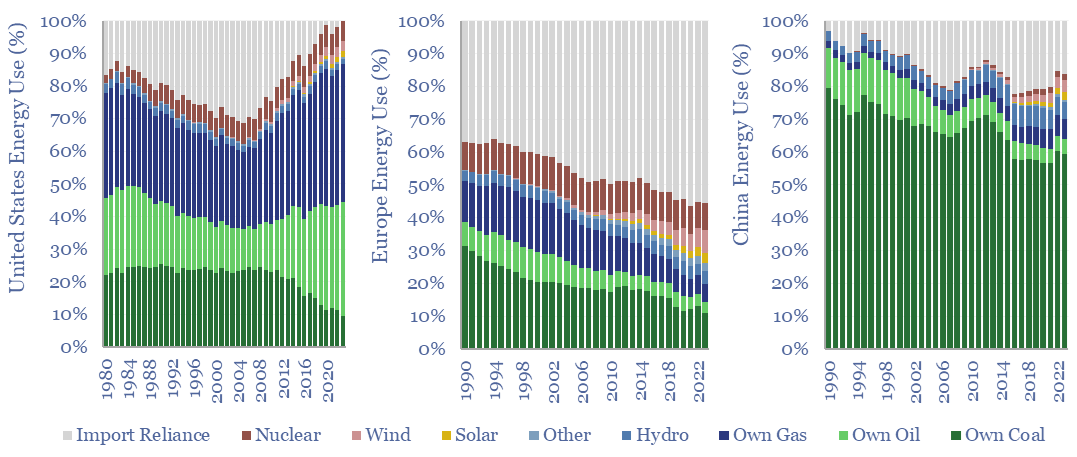The average major economy produces 70% of its own energy and imports the other 30%. This 12-page note explores energy security by country. We draw three key conclusions: into US isolationism; Europe’s survival; and the pace of EV adoption, both in China and in LNG-importing nations.
Energy self-sufficiency can be defined in different ways. Our own preferred definition is explained on page 2. Our cross-plot of energy self-sufficiency by country is also shown on page 2.
This matters because energy is the lifeblood of all economic activity, while import dependency creates vulnerabilities amidst rising geopolitical tensions, as outlined on page 3.
Our first observation is that the US is entering a new era of foreign policy. Whatever the outcome of the upcoming US election, we fear that some commentators will increasingly call for an isolationist stance, for the reasons on pages 4-5.
Our second observation is an abysmal deterioration in Europe’s energy security, falling more than any other region, despite ramping wind and solar. Failure to unlock domestic resources is an existential threat to Europe’s security, and a missed opportunity for ESG oversight, as argued on pages 6-9.
Our third observation is that the rise of electric vehicles is heavily linked to different countries’ energy security. Most notably, China is substituting oil import reliance for domestic coal and renewables. But other regions may have less motivation to ramp electric vehicles, while doing so will largely increase LNG demand, as argued on pages 10-12.
The full note contains around 20 charts tabulating energy self-sufficiency by country and over time, as a useful reference, for this increasingly important metric.
